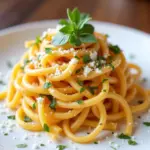Vietnam’s vibrant culinary scene is renowned for its fresh flavors and aromatic herbs. But beyond the pho and banh mi, there exists a world of dishes that might make even the most adventurous foodie hesitate. These “most terrifying dishes” often involve ingredients that Western palates find unusual, offering a unique glimpse into Vietnamese food culture and traditions.
Dare to Try These Vietnamese Delicacies?
Venturing beyond your comfort zone can lead to incredible culinary discoveries. While “terrifying” might be subjective, these dishes certainly offer a unique experience. One such example is tiet canh, a raw blood pudding made with fresh animal blood, often duck or pig. Its jelly-like texture and rich, metallic flavor can be quite confronting for the uninitiated. Another dish that often raises eyebrows is balut, a fertilized duck egg that is boiled and eaten in the shell. The partially developed embryo inside adds a unique texture and flavor that some find unsettling.
For those seeking a truly adventurous experience, there are dishes featuring insects and other creepy crawlies. From crispy fried crickets to crunchy coconut worms, these protein-packed snacks offer a taste of entomophagy, the practice of eating insects.
Beyond the “Fear Factor”: Understanding Vietnamese Food Culture
It’s essential to approach these dishes with an open mind and a respect for local traditions. What might seem “terrifying” to one culture can be a cherished delicacy in another. These dishes are often deeply rooted in history and cultural practices, reflecting resourcefulness and a connection to the land. For example, insects have long been a valuable source of protein in many cultures, and their consumption is both sustainable and environmentally friendly.
What are some commonly considered “terrifying” Vietnamese foods?
Some of the most frequently cited “terrifying” dishes include balut, tiet canh, nhong, (scorpion wine), and various insect-based dishes like fried crickets or silkworms. Each dish carries its own unique flavor profile and cultural significance.
Why do Vietnamese people eat these dishes?
The reasons for consuming these dishes are varied. Some are considered delicacies, enjoyed for their unique flavors and textures. Others are traditionally consumed for their perceived health benefits or as a source of readily available protein.
Where can I try these dishes in Hanoi?
If you’re feeling brave and want to sample some of these unusual delicacies, Hanoi offers numerous opportunities. Local markets and street food stalls are excellent places to start your culinary adventure. các món ăn cho mèo You can also find them in some more adventurous restaurants. Be sure to ask locals for recommendations and guidance.
Navigating Hanoi’s Culinary Scene with TRAVELCAR
Exploring Hanoi’s vibrant food scene is made easier with TRAVELCAR. Our car rental services, including 16-seater, 29-seater, and 45-seater vehicles, provide convenient and comfortable transportation to explore the city’s diverse culinary hotspots. Whether you’re venturing into the heart of the Old Quarter or exploring the surrounding countryside, TRAVELCAR can help you navigate Hanoi’s culinary landscape with ease. We also offer airport transfers and customized tours, ensuring a seamless and enjoyable travel experience.
Conclusion: Embrace the Adventure
While the idea of “most terrifying dishes” might seem daunting, it’s an invitation to step outside your culinary comfort zone and embrace the unique flavors and traditions of Vietnam. With TRAVELCAR, you can navigate Hanoi’s culinary landscape with ease and discover the hidden gems that await.
FAQ
- Is it safe to eat these dishes? As with any food, it’s important to ensure it’s prepared hygienically. Choose reputable vendors and restaurants.
- What is the best way to try balut? Locals often recommend adding a pinch of salt and a squeeze of lime juice.
- Are insects a common food source in Vietnam? Yes, in certain regions, insects are a regular part of the diet and are considered a sustainable protein source.
- Does TRAVELCAR offer guided food tours? Yes, we can arrange customized food tours tailored to your interests.
- What are the rental rates for TRAVELCAR’s vehicles? Please contact us for detailed pricing information.
Need help planning your Hanoi culinary adventure? Contact TRAVELCAR at 0372960696, email us at TRAVELCAR[email protected], or visit our office at 260 Cầu Giấy, Hanoi. Our 24/7 customer service team is ready to assist you.

